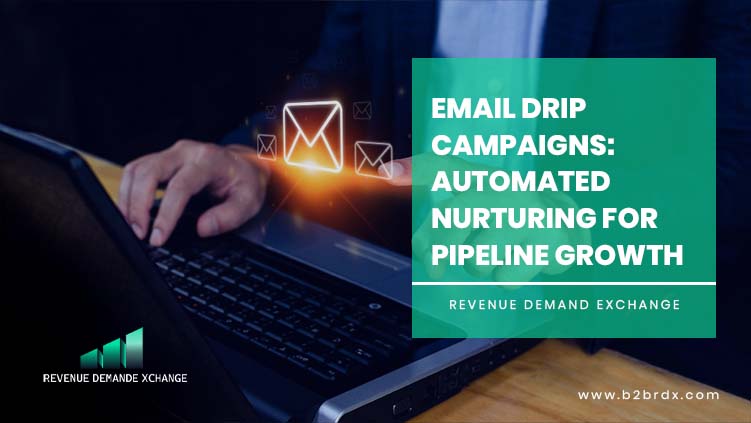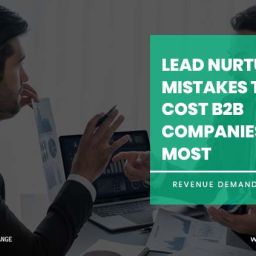Email Drip Campaigns: Automated Nurturing for Pipeline Growth

In B2B marketing, generating leads is only half the battle. Turning those leads into qualified prospects and ultimately into customers requires consistent engagement, personalized communication, and timely follow-ups. Email drip campaigns have emerged as one of the most effective ways to achieve this. By automating the nurturing process, businesses can deliver relevant content at the right time, guide prospects through the buyer’s journey, and accelerate pipeline growth. When executed strategically, email drip campaigns become a reliable engine for conversion and revenue expansion.
Understanding Email Drip Campaigns
Email drip campaigns, also known as automated email sequences, involve sending a series of pre-planned messages to leads or customers over time. Each email is triggered based on specific actions, behaviors, or timelines. Unlike one-off promotional emails, drip campaigns are designed to nurture relationships, educate prospects, and build trust gradually. They can include welcome sequences, onboarding emails, product education, content nurturing, and re-engagement campaigns. The goal is to maintain consistent communication while delivering value, guiding recipients closer to making a purchase decision.
Why Drip Campaigns Are Essential for B2B Marketing
B2B sales cycles are typically long and complex, involving multiple stakeholders and extended evaluation periods. A single email or outreach effort is rarely sufficient to move leads forward. Drip campaigns provide structured, automated engagement that keeps your brand top-of-mind without requiring constant manual effort. They allow marketers to nurture leads with personalized content, track engagement metrics, and respond dynamically based on prospect behavior. This ongoing touchpoint strategy ensures that no lead is neglected and that every interaction reinforces your authority and relevance.
Segmenting Your Audience for Maximum Impact
Effective drip campaigns start with segmentation. Not all leads have the same interests, pain points, or readiness to buy. Segmenting your audience based on factors like industry, job role, company size, engagement history, and buyer stage allows you to tailor messaging for maximum relevance. For example, a lead who downloads a whitepaper on “B2B Marketing Automation” should receive a different sequence than someone who signs up for a free trial. Personalized sequences increase open rates, click-through rates, and ultimately, the likelihood of conversion.
Designing a Strategic Email Sequence
Every drip campaign should have a clear purpose and roadmap. Start by defining the buyer’s journey and aligning your emails with each stage. Early-stage leads may benefit from educational content like blog summaries, industry insights, or eBooks. Mid-funnel prospects might receive case studies, solution guides, or comparison sheets. Late-stage leads respond well to product demos, pricing information, and ROI calculators. The key is to structure the sequence logically, gradually guiding recipients toward a conversion while avoiding overwhelming them with too many emails.
Crafting Compelling Email Content
The success of a drip campaign depends on the quality of its content. Each email should deliver value, speak to the recipient’s pain points, and include a clear call-to-action (CTA). Subject lines should be concise, engaging, and personalized to encourage opens. The body should be informative, easy to read, and visually clean. Incorporate links to gated content, blog posts, webinars, or demos that further nurture the lead. Striking the balance between educational content and promotional messaging ensures that recipients remain engaged without feeling spammed.
Leveraging Automation and Triggers
Automation is at the core of drip campaigns. Using marketing automation platforms, emails can be triggered by specific actions, such as form submissions, website visits, or content downloads. Behavioral triggers allow for hyper-personalized communication. For instance, if a lead clicks a link about “Enterprise SaaS Pricing,” the next email can provide a detailed pricing guide or invite them to a demo. Automation ensures timely follow-ups, reduces manual workload, and improves the overall efficiency of your lead nurturing process.
Monitoring and Optimizing Performance
Continuous monitoring and optimization are critical for effective drip campaigns. Track key metrics such as open rates, click-through rates, conversion rates, and unsubscribe rates. Identify which emails are performing well and which require improvement. A/B testing subject lines, email copy, CTAs, and send times can significantly enhance performance. Additionally, reviewing engagement patterns helps refine segmentation, messaging, and automation rules. A data-driven approach ensures your campaigns remain relevant and effective over time.
Integrating Drip Campaigns With Other Marketing Channels
Email drip campaigns work best as part of a holistic marketing strategy. Integrate them with content marketing, social media, webinars, and paid campaigns to reinforce messaging and increase touchpoints. For example, an email sequence promoting an eBook can be supported by social media posts and retargeting ads highlighting the same content. Multichannel reinforcement increases visibility, credibility, and engagement, helping nurture leads more effectively and accelerating their journey through the sales pipeline.
Conclusion
Email drip campaigns are a cornerstone of modern B2B marketing, combining automation, personalization, and strategic content delivery to nurture leads effectively. By segmenting audiences, crafting compelling sequences, leveraging automation triggers, and continuously optimizing performance, businesses can build stronger relationships, increase engagement, and drive pipeline growth. When integrated with other marketing channels, drip campaigns not only generate leads but also create a scalable system for converting prospects into loyal customers. In a landscape where consistent, meaningful engagement is key, email drip campaigns provide the structure, efficiency, and impact B2B marketers need to thrive.


